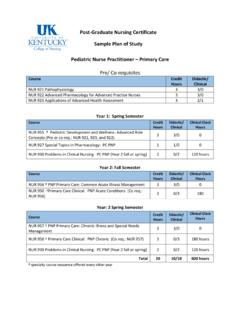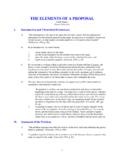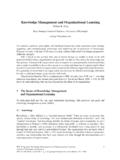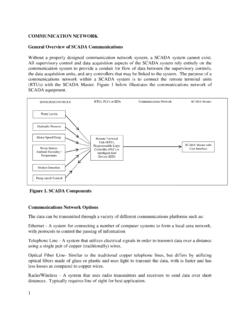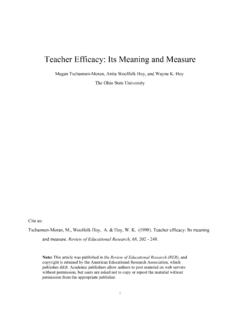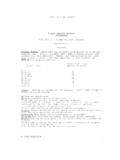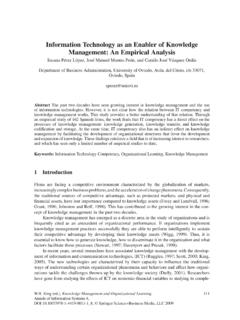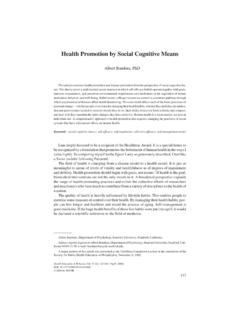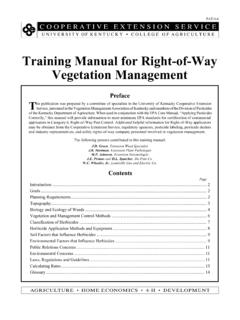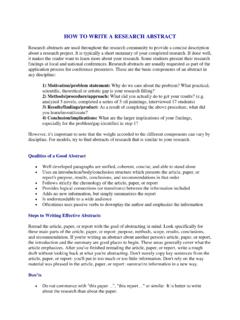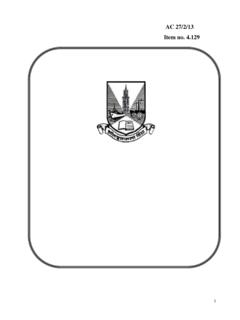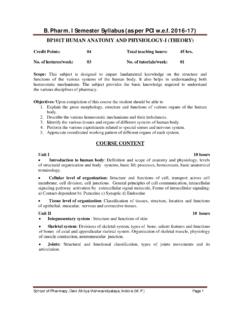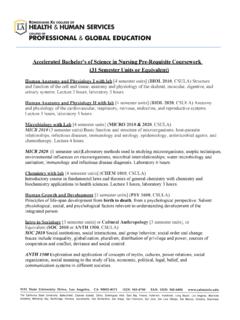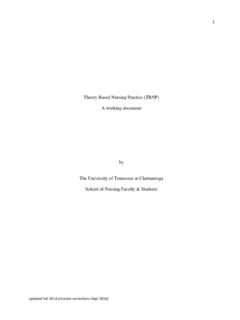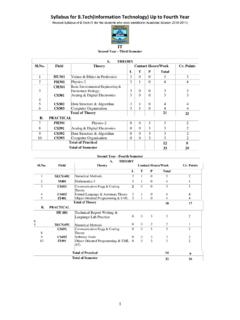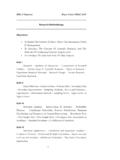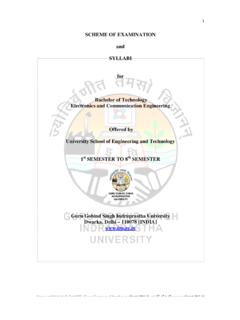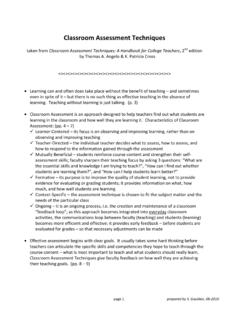Transcription of Applied Microeconomics - University of Kentucky
1 _____ Applied Microeconomics Consumption, Production and Markets David L. Debertin _____ Applied Microeconomics Consumption, Production and Markets This is a microeconomic theory book designed for upper-division undergraduate students in economics and agricultural economics. This is a free pdf download of the entire book. As the author, I own the copyright. Amazon markets bound print copies of the book at at a nominal price for classroom use. The book can also be ordered through college bookstores using the following ISBN numbers: ISBN 13: 978 1475244342 ISBN-10: 1475244347 Basic introductory college courses in Microeconomics and differential calculus are the assumed prerequisites.
2 The last, tenth, chapter of the book reviews some mathematical principles basic to the other chapters. All of the chapters contain many numerical examples and graphs developed from the numerical examples. The ambitious student could recreate any of the charts and tables contained in the book using a computer and Excel spreadsheets. There are many numerical examples of the key elements of marginal analysis. In addition, many practical examples are taken from the real world to illustrate key points. Most of the examples used in the book come from the food and agricultural industries, broadly defined. Examples in consumer choice and utility focus on consumer decisions to purchase hamburgers and French fries.
3 Production examples involve choices farmers make in order to apply fertilizer to crops. Market models are employed that illustrate consumer choice between beef, pork and chicken at the grocery meat counter, and so on. A few of the examples do not employ agriculturally related goods, such as the examples dealing with the fate of the Polaroid corporation and its instant cameras, monopoly power of cable television providers and competition between the big three auto makers in the 1950s. Each chapter begins with material that will be familiar to nearly any student who has passed an introductory Microeconomics course. However, as each chapter progresses, the problems and the math required to complete them get tougher.
4 Critical points throughout the text are highlighted in text boxes. The instructor need not use all of the sections of each chapter for a course as each section of each chapter is self-contained. Each chapter concludes with a basic summary of key points and a comprehensive list of terms and definitions. Students might choose to begin by reading the key summary points and definitions at the end of each chapter. Each chapter also contains a spreadsheet exercise for students to create examples similar to the tables and charts in the text. The book is designed for use in a one-semester course, covering the parts of Microeconomics that nearly every instructor believes should be covered at the intermediate level, but also recognizing that most instructors will want to devote a few weeks of the semester to material specific to their own interests.
5 This is one of three agricultural economics textbooks by David L. Debertin available as a free download. Agricultural Production Economics (Second Edition, Amazon Createspace 2012) is a revised edition of the Textbook Agricultural Production Economics published by Macmillan in 1986 (ISBN 0-02-328060-3). As the author, I own the copyright. Amazon also markets bound print copies of the book at at a nominal price for classroom use. The book can also be ordered through college bookstores using the following ISBN numbers: ISBN-13 978-1469960647 ISBN-10 1469960648 A companion 100-page color book Agricultural Production Economics (The Art of Production theory ) is also a free download.
6 A bound print copy is also available on at a nominal cost under the following ISBN numbers: ISBN- 13: 978-1470129262 ISBN- 10: 1470129264 If you have difficulty accessing or downloading any of these books, or have other questions, contact me at the email address, below. David L. Debertin Professor Emeritus University of Kentucky Department of Agricultural Economics Lexington, Kentucky , 40515-0276 David L. Debertin is professor emeritus of Agricultural Economics at the University of Kentucky , Lexington, Kentucky and has been on the University of Kentucky agricultural economics faculty since 1974 with a specialization in agricultural production and community resource economics.
7 He received a and an degree from North Dakota State University , and completed a in Agricultural Economics at Purdue University in 1973. This book is not an introductory Microeconomics text, but instead is designed to be used as a one-semester course in intermediate Applied Microeconomics . What makes this book different from other texts in intermediate microeconomic theory is the emphasis not only on the concept but also on applying the concept to find specific numerical solutions using math. Students are expected to have completed a course in basic undergraduate microeconomic theory and a course in differential calculus. The content is based on the author s experience teaching Applied Microeconomics to upper-division undergraduate students.
8 Examples used throughout the text begin with basic concepts familiar to students who have completed a basic Microeconomics course, but build on these basic concepts in a host of new ways. Each concept is illustrated using a specific mathematical equation. Tables of data are created and graphs are drawn based on a specific mathematical function that illustrates each concept. The tables of data contained in the text can be recreated by the student using Microsoft Excel spreadsheets. Most of the examples used to portray concepts within the book emphasize specific ideas from the food and agriculture industries. Applied Microeconomics Consumption, Production and Markets David L.
9 Debertin University of Kentucky Lexington, KY ii Copyright 2012 David L. Debertin All rights reserved. ISBN: 1475244347 ISBN 13: 978 1475244342 Second Printing, December, 2012 iii Preface This is a book focusing on the core concepts of Microeconomics with an emphasis on marginal analysis. It was designed for upper division undergraduate students in economics and agricultural economics. Basic introductory college courses in Microeconomics and differential calculus are the assumed prerequisites. All of the chapters contain numerical examples, mathematical functions and graphs developed from the numerical examples and functions. Numerical examples employing mathematical functions illustrate the key elements of marginal analysis.
10 In addition, practical examples are taken from the real world to illustrate key points. Most of the examples used in the book come from the food and agricultural industries, broadly defined. Examples in consumer choice and utility focus on consumer decisions to purchase hamburgers and French fries. Production examples involve choices farmers make in applying fertilizer to crops. Market models are employed that illustrate consumer choices for beef, pork and chicken at the grocery meat counter, and so on. A few of the examples do not employ agriculturally related goods, such as the examples dealing with the fate of the Polaroid corporation and its instant cameras, monopoly power of cable television providers and competition between the big three US auto makers in the 1950s.
